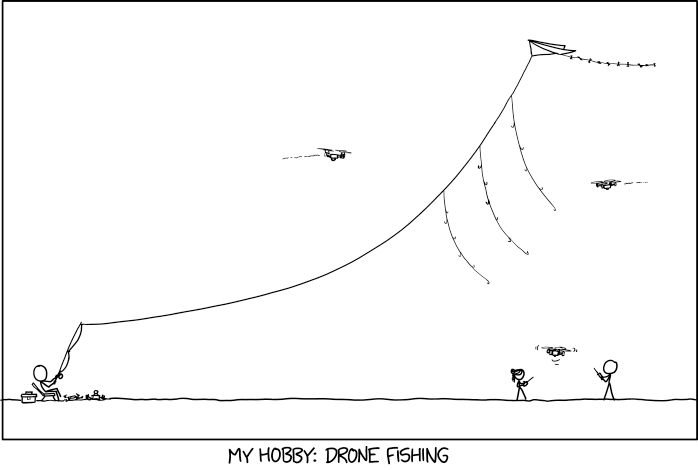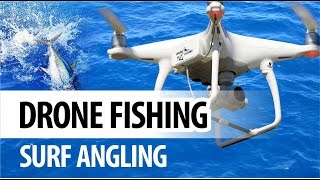
The regulations for drone fishing are important to understand if you plan on using one. You can also watch some instructional videos on how to fly a drone to catch fish. Read our article about drone ethics if you have any questions. We'll be discussing some of the ethical issues surrounding drone fishing. And don't forget to check out our drone fishing gear guide.
Regulations regarding drone fishing
The regulations for drone fishing for tuna can be confusing when you're watching YouTube videos. There are several reasons to follow local laws, but in the end, the main concern is safety. You need to follow the right laws in order to protect the lives of both you and the fish. In this article we will cover some of the most important rules and make sure you follow them. And don't forget to follow the rules of the International Game Fish Association.
Drones cannot fly over public areas such as sporting events or stadiums. They cannot carry weapons or be within half a mile of a sporting event. Drone operators must always be able to see their aerial equipment. Drones cannot fly over public buildings, stadiums, or critical infrastructure. If you aren't sure what the rules are regarding drone fishing, contact your local law enforcement agency or consult an attorney.

Although many states have already passed laws governing drone use, others are yet to do so. For example, Illinois has recently enacted SB 2167. This bill prohibits drones from being used in state parks, without permission. It also provides privacy rights as well as outlines the rules and regulations for recreational and commercial drone owners. It also prohibits drones interference with hunters and other wildlife. These new laws are expected be finalized within a few years.
Drone fishing: Ethical concerns
Drone fishing is not without controversy. There are companies that sell underwater drones capable of fishing for fish. The video content of these drones often contains the actual fishing process, which is remarkably similar to casting a line to a fish. However, the process of getting a fish out from the water is quite different. If you are ethically concerned about this fishing method, you might consider looking elsewhere for entertainment.
While drones have obvious benefits for fishing, some feel they cheat the fisherman. Although fishing hasn't changed much in millennia over, the thrill of the chase and the capture of a fish by drones may have an impact on the sport. Drones could also be harmful to conservation. Before you buy a drone for fishing, here are some ethical considerations.

Drone fishing is not the best choice. Drone fishing can be harmful to the environment and could overfish endangered species. Some states allow drones to be used for recreational fishing. Others do not. Drone fishing comes with a few limitations. The drones you buy might not be as capable of controlling the range, GPS functionality, lifting power, or control range that you need. In addition, drone fishing can lead loss of fish if lines get tangled. Finally, there are issues with piloting.
FAQ
What are the rules of operation for drones?
The FAA must register your drone. The registration process requires you to provide information about your device, such as its weight, dimensions, battery capacity, operating frequency, and battery life. A FAA identification number is also required.
You can fly a drone as high as you like without a license.
The FAA has no limits on the maximum height a drone can fly. However, you must register your unmanned aircraft system (UAS), which includes the registration numbers, model name and weight, size, serialnum, manufacturer's name and date manufactured.
With a drone, can someone spy on me?
A drone can be used to spy on anyone. It is important to be aware of drones and to avoid any areas they may fly. If you notice a drone flying around, call 911 immediately.
Is it illegal for a drone to be flown?
Yes, it is illegal to fly drones in some countries like Australia, Canada and New Zealand. It is legal in countries such as France, Italy Netherlands, Poland and Russia.
Statistics
- According to the multiple listing service (MLS), houses and apartments with drone photographs are up to 68 percent more likely to sell than those without pictures. (thedroneu.com)
- According to Indeed, a drone pilot gets paid $25.73 per hour on average in the US. (dronesgator.com)
- Research and Markets predict a growth rate of 51.1% over the next five years. (thedroneu.com)
External Links
How To
How to Fly Drones With Beginners
A drone can be used to fly remotely controlled aircraft for photography, surveillance, scientific research, hobby and commercial purposes. Drone technology has existed since World War II. DJI's Phantom quadcopters became commercially available in 2010. Since then, there have been many different types of drones available, from beginner-friendly models like the Parrot AR Drone 2.0 to professional-grade multi-rotor craft like the DJI Mavic Pro.
You can fly a drone in many different ways, including:
-
Remote control - This method uses a control device attached to your hand, which enables you to steer the drone through its flight path. There are two main types, On/Off switches (like radios) and joysticks.
-
Manual Control – This allows remote operation of the drone via GPS coordinates using a smartphone application. The app will give you instructions.
-
Autonomous Flight: This means that the drone will take care of all the piloting. It basically flies autonomously without any human intervention. A drone must have a builtin camera and sensors capable to capture images and other data.
-
Triggered Flight - This method is similar to manual control, except the pilot manually sets up a preprogrammed route, and the drone follows that route until it reaches the endpoint. Once the programmed route has been completed, the drone returns to the base automatically.
-
Landing Gear – Some drones are equipped with landing gear, which allows them to safely land if they lose power during flight.
-
Goggles - Some pilots wear goggles to protect themselves from debris while operating.
-
Camera - Some drones can be equipped with cameras which enable you to capture photos from the sky.
-
Obstacles – Some drones have obstacle avoidance systems that stop them from colliding with obstacles.
-
Speed - Some drones can reach speeds of over 40 mph.
-
Battery Life - Most drones can last between 20 minutes to 3 hours, depending on how much power you're using.
-
Some drones are capable of traveling up to 30 miles depending upon their make and model.
-
Power source - Not all drones can use an external power source. Others can run on internal batteries.
-
Weight - Some drones have a weight of less than 1 pound and others weigh 4 lbs.
-
Size - Drones can range in size from tiny devices that can fit in your palm to heavy crafts that weigh 50 pounds.
-
Price - All drones fall within a specific price range, from high-end models that can cost thousands of dollars to lower-cost options starting at $100.